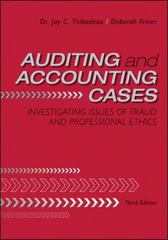In the mid-1990s Qwest Communications International embarked on building a fiber-optic network across major cities within the
Question:
In the mid-1990s Qwest Communications International embarked on building a fiber-optic network across major cities within the United States. The network would consist of a series of cables that contained strands of pure glass that could transmit data by using light and the appropriate equipment. Qwest’s initial strategy was to build the network of fiber cable and sell it in the form of an indefeasible right of use (IRU), an irrevocable right to use a specific amount of fiber for a specified time period.
However, when Joseph Nacchio became Qwest’s CEO in January 1997, the strategy of the company shifted toward communications services. Nacchio envisioned that Qwest had the potential of becoming a major telecommunications company that offered Internet and multimedia services over its fiber-optic network, in addition to offering traditional voice communications services.4 Qwest’s Construction Services Business A fiber-optic network consists of a series of cables that contain strands of pure glass and allow transmission of data between any two connected points using beams of light. While each cable of the fiber-optic network typically contains at least 96 strands of fiber, Qwest intended to use 48 of the fiber strands for its own use and to sell the remaining strands to help finance the cost of construction of the network.5 Total revenue from its construction services business was approximately \($224.5\) million, \($688.4\) million, and \($581.4\) million in 1999, 1998, and 1997, respectively.6 Competition As of 1999, Qwest faced competition in the construction services segment from three other principal facilities-based long distance fiber optic networks: AT&T, Sprint, and MCI WorldCom. In its 1999 annual filing with the SEC, Qwest warned investors that others—including Global Crossing, GTE, Broadwing, and Williams Communications—were building or planning networks that could employ advanced technology similar to Qwest’s network. Yet Qwest assured investors that it was at a significant advantage because its network would be completed in mid-1999, at least a year ahead of the planned completion of other networks, and it could extend and expand the capacity of its network using the additional fibers that it had retained..............
Case Questions
1. Based on your understanding of fraud risk assessment, what three conditions are likely to be present when a fraud occurs (the fraud triangle)? Based on the information provided in the case, which of these three conditions appears to be the most prevalent, and why?
2. Based on your understanding of inherent risk assessment and the case information, identify three specific factors about Qwest’s business model that might cause you to elevate inherent risk if you were conducting an audit of internal control over financial reporting at Qwest.
3. Comment on how your understanding of the inherent risks identified at Qwest (in Question 2) would influence the nature, timing, and extent of your audit work at Qwest.
4. Next consider revenue earned in the construction services and the communication services businesses. Do you believe that any of the different types of revenue earned by Qwest might be subject to significantly differing levels of inherent risk? Why or why not?
Step by Step Answer:

Auditing And Accounting Cases Investigating Issues Of Fraud And Professional Ethics
ISBN: 9780078110818
3rd Edition
Authors: Jay Thibodeau, Deborah Freier





